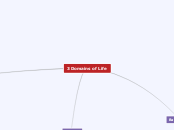3 Domains of Life
Eukarya
Archaea
Bacteria
Eubacteria
Archaebacteria
Protista
Animal-like protists
Sarcodines
Move with pseudopods (False feet)
Amoeba Proteus
Ciliates
Move with cilia (act like oars in water. Very fast)
Paramecium caudatum
Flagellates
Flagella for movement. Rotor-like whipping motion
Trypanosome gambiense
Sporozoan
Not motile: Lives in the gut of a mosquito
Plasmodium
Plant-like Protists
Euglenoids
Euglena
Rhodophyta
Red algae
Fungal-like Protists
Water Molds
Domain
Kingdoms
Phylums
Subphylum
Classes
Superclasses
Groups
Clade
Order
Fungi
Ascomycota
Saccharomyces cerevisiae
Zygomycota
Rhizomes Stolonifer
Basidiomycota
False Truffle
Deuteromycota
Aspergillus niger
Plantae
Bryophytes
Mosses
Liverworts
Hornworts
Seedless Vascular
Club mosses
Ferns
Gymnosperms
Conifers
Cycads
gnetophyta
ginkgo
Angiosperms
Flowering Plants
Animalia
Porifera
Sponges
Cnidaria
Anthozoa
Sea Anemones/ Corals
Cubozoa
Box Jellyfish
Hydrozoa
Fire Corals
Scyphozoa
The true jellyfish
Subtopic
Platyhelminthes
Trematoda
Cestoda
Nematoda
Annelida
Leeches
Earthworms
Arthropoda
Trilobita
Crustacea
crabs
Uniramia
Chilopoda
Diplopoda
Hexapoda
Insects
Bees
Chelicerate
Aranae
Scorpionidae
Mollusks
Gastropoda
Snails
Cephalopoda
Octopus
Bivalva
Clams
Echinoderms
Starfish
Sea urchins
Chordates
Vertabrata
Agnathans
Lampreys
Hagfish
Tetrapoda
Amniotes
Gnathostomata
Mammalia
Placentals
Lagomorpha
Hares
Marsupials
Marsupialia
Opossum
Monotremes
Monotremata
Platypus
Aves
Erithacus Rubicula
Reptilia
Python regius
Amphibia
Rhinella Marina
